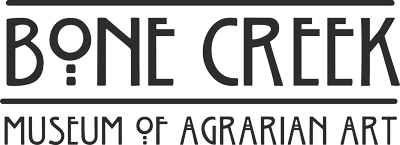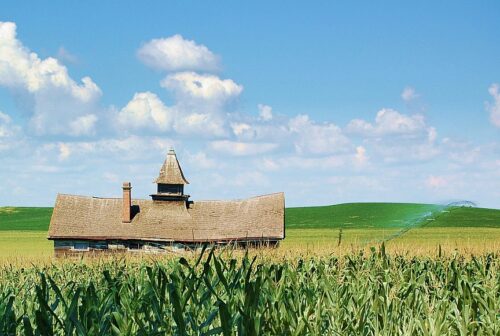June 11 – Aug. 29, 2021
Author/photographer Matt Steinhausen will feature selections from his sell-out book The Least Interesting Place (2020) at the museum. The coffee table book with a clever title explores many facets of life in Nebraska. The museum’s selections focus on rural livelihoods and the unique landscape of the state. A reception is planned for Saturday, July 10th from 2-4pm.
Hundreds of images from the book have been carefully curated for this first museum exhibition for Steinhausen. He said, “I’ve tried to put together a collection of pieces that are simple, yet eye-catching, and conjure a Nebraska sentimentality that makes one feel homesick and at home, all at the same time.”
As a 6th generation Nebraskan, Steinhausen says he has never let go of the connection to the land that was formed in his youth. He is honest and forthcoming about how his project came about and that it is not an all-inclusive-professional-documentary about the state. But a hobby that began in high school has blossomed and developed over the years as he lived, worked and traveled in Nebraska.
Together the stories told by the photographer and stories in the mind of the viewer are exactly what make the “least interesting” places very interesting. “We all have those stories,” says curator Amanda Guenther. “For many people thoughts of the land bring out very emotional memories.” Many people will resonate with the images and Steinhausen’s perspective of enjoying the details of life that we sometimes can’t slow down long enough to appreciate.
Steinhausen describes his un ique framing process. “I constructed most the frames with flooring salvaged from local buildings, including maple flooring from the Rokeby Town Hall / gymnasium, in Rokeby, NE, pine flooring from the “Happy Go Lucky” School District 66 building near Denton, NE, and pine flooring from the old Bethlehem Covenant Church that stood near Waverly, NE. The pieces of glass I used in the frames were non-standard leftovers obtained from a defunct cabinet shop some 20 years ago. The frames were constructed to match the pieces of glass I had on hand, so there’s an unconventional variety of shapes and sizes of frames that have been constructed mostly from repurposed materials. I tried to leave the surfaces of the wood as undisturbed as possible because the age and wear gives them a warm and familiar feel and texture.”
ique framing process. “I constructed most the frames with flooring salvaged from local buildings, including maple flooring from the Rokeby Town Hall / gymnasium, in Rokeby, NE, pine flooring from the “Happy Go Lucky” School District 66 building near Denton, NE, and pine flooring from the old Bethlehem Covenant Church that stood near Waverly, NE. The pieces of glass I used in the frames were non-standard leftovers obtained from a defunct cabinet shop some 20 years ago. The frames were constructed to match the pieces of glass I had on hand, so there’s an unconventional variety of shapes and sizes of frames that have been constructed mostly from repurposed materials. I tried to leave the surfaces of the wood as undisturbed as possible because the age and wear gives them a warm and familiar feel and texture.”
Support for this exhibition has been made possible in part by a grant from the Butler County Arts Council.




